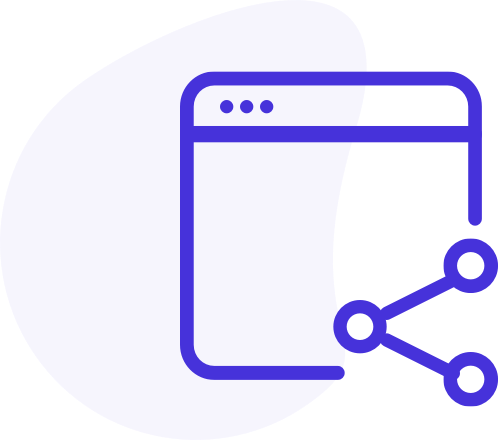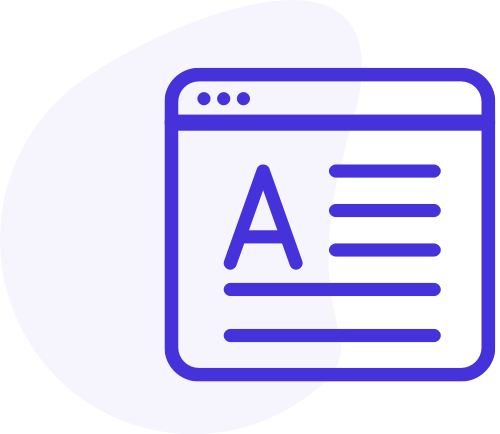When companies struggle with allocating the time and resources necessary to properly qualify leads, they suffer from reduced ROI, lower than average close rates, and wasted effort in general.
But because lead qualification is the key to improving any sales team’s productivity, effective qualification strategies are a key component of how to build an outbound sales team that performs and performs well.
Companies need to invest in effective strategies to help them not only explore leads, but also understand the qualification process in totality.
Managing the Lead Qualification Process
What are leads – It’s a common question, but what does it actually mean?
A lead is a prospect that has been identified as an entity that might actually have a need for your service or product and who matches you ICP.
Leads are only as good as the process implemented to qualify them. Because you can’t convert every prospect to a lead, and every lead to a customer, you need to understand the qualification process and how to master it.
Looking at qualified leads is a scientific process, with little room for error. Fewer deviations mean fewer mistakes and therefore a higher ROI. Less time wasted also means that your outbound sales staff are spending more time talking to contacts who want to buy and less time wasted on leads who are not qualified.
A Perfect 10: The Key Steps to Qualification Success
The sales experts at BitWide have spent considerable time managing the lead qualification process, and we’ve broken it down into several key steps to ensure efficiency and effectiveness:
1. Define Lead Criteria: Clearly outline the criteria that define a qualified lead for your business. This could include demographics, behaviours, interests, budget, authority, and need.
2. Use Lead Scoring: Implement a lead scoring system to rank and prioritize leads based on their engagement level, fit with your ideal customer profile, and their readiness to buy. This helps focus efforts on the most promising leads.
3. Automate Where Possible: Utilize automation tools like customer relationship management (CRM) software to streamline the lead qualification process. Automated lead scoring, tracking interactions, and setting up workflows can enhance efficiency.
4. Train and Educate Sales Teams: Equip your sales team with comprehensive training on lead qualification criteria, techniques, and the use of relevant tools (such as BitWide’s incredible blog!). Ensure your sales teams understand the nuances of qualifying leads and the importance of accurate data entry in the CRM.
5. Implement Lead Qualification Frameworks: Use frameworks like the GPCTBA/C&I (Goals, Plans, Challenges, Timeline, Budget, Authority, Negative Consequences, Positive Implications) to thoroughly qualify leads during conversations and gather relevant information.
6. Establish Communication Channels: Foster seamless communication between marketing and sales teams. Clearly define handover points and criteria for passing leads from marketing to sales, ensuring alignment and reducing miscommunication.
7. Regularly Review and Refine: Continuously review the lead qualification process. Analyze the effectiveness of your criteria, scoring models, and sales interactions. Make adjustments based on feedback, data analysis, and evolving customer needs.
8. Segment Leads: Segment leads based on their qualification status, industry, behaviour, or other relevant factors. This enables targeted and personalized communication strategies for different lead categories.
9. Measure Performance: Monitor key performance indicators (KPIs) related to lead qualification, such as conversion rates at each stage, time taken to qualify leads, and the percentage of qualified leads that convert to customers.
10. Provide Feedback Loops: Establish feedback loops where sales teams can provide insights into the quality of leads received. This helps marketing teams refine their lead generation strategies to attract higher-quality prospects.
Consistency, adaptability, and a commitment to continuous improvement are crucial for an effective lead qualification process in sales, and an inbound or outbound sales team needs to be educated on these steps to be most successful.
Managing Expectations is Key
Here’s a quick note about how to manage your expectations in an age where we all want everything by yesterday. Qualified leads take time, but they also require several follow-up. Balancing this timing is like walking a knife’s edge. Leave the choices are going to lose their heat in a day or two, so you need to pounce. But follow-up too aggressively and you’re going to spook them.
This is why team leaders need to have clear, measurable, executable roles for their sales teams to foster maximum impact. Outbound lead generation teams need to know precisely how and when to follow-up with prospects and leads to warm them up, and prep them for closing.
Another key point in managing expectations is knowing when to let the lead go. Many outbound sales professionals chain themselves to qualified leads, and insist on trying to turn them into customers even when the likelihood amounts to jamming a square peg into a round hole.
If a prospect can’t be warmed up and lead nurturing is impossible, it may be time to say goodbye and move them out of the funnel. It’s disappointing, but it’s also a key part of managing your sales funnel and understanding when a lead is flailing or worse, floundering.
Creating a productive outbound sales team requires proper identification of prospects ready to become leads and leads who are ready to be closed — as well as false leads that will never progress through the funnel.
By setting up your funnel correctly, and training your sales team to understand its intricacies including a step-by-step plan to make it work, your organization will enjoy higher close rates, better sales numbers, and more revenue.










